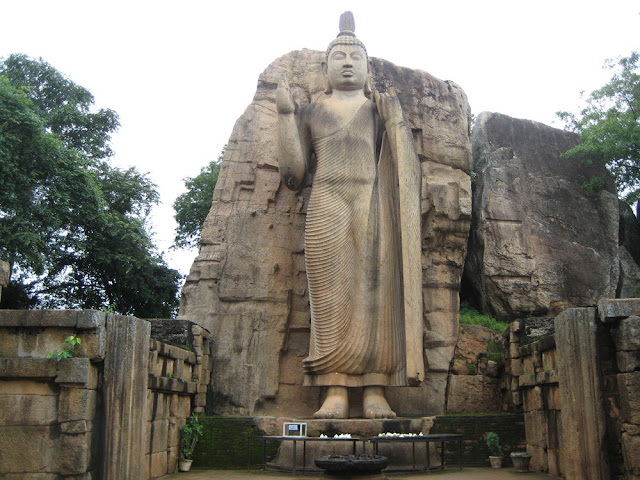Sri Lanka
Sri Lanka
The Democratic Socialist Republic of Sri Lanka was called Ceylon until 1972. In ancient sources it is referred to as Lanka, Taprobane and also as Serendib. As a tourism destination it indeed has everything to ensure ‘serendipity’: for making happy and unexpected discoveries. Despite its size of only 65,525 square kilometers the island offers a wide variety of landscapes and great natural beauty: from picturesque beaches to impressive mountains, from rainforests to red desert-like plains, from spectacular botanical gardens to unique wildlife.
The six cultural World Heritage Sites of Sri Lanka are:
1. The Ancient City of Polonnaruwa (added in 1982). In 993 Polonnaruwa became the second capital of Sri Lanka after the destruction of Anuradhapura. It includes both the Brahmanic monuments built by the Cholas, and the ruins of the garden-city Parakramabahu I created in the 12th century.
2. The Ancient City of Sigiriya (added in 1982). This capital was built by King Kassapa I (477–95). The ruins lie on the 370 m high 'Lion's Rock', which dominates the jungle.
3. The Golden Temple of Dambulla (added in 1991) has been a sacred pilgrimage site for 22 centuries. The cave monastery comprises of five sanctuaries with impressive Buddhist mural paintings and 157 statues and is the largest and best-preserved cave-temple complex in Sri Lanka.
4. The Old Town of Galle and its Fortifications (added in 1988). Galle was founded by the Portugese in the 16th century. UNESCO describes the site as “the best example of a fortified city built by Europeans in South and South-East Asia, showing the interaction between European architectural styles and South Asian traditions.”
5. The Sacred City of Anuradhapura (added in 1982), established around a cutting from the 'tree of enlightenment'. This cutting of the Buddha's fig tree was brought there in the 3rd century B.C. by Sanghamitta, the founder of an order of Buddhist nuns. Anuradhapura flourished for 1,300 years as a religious center and the Ceylonese capital.
6. The Sacred City of Kandy (added in 1988). Here one finds the Temple of the Tooth Relic (the sacred tooth of the Buddha), a famous Buddhist pilgrimage site. Kandy was the last capital of the Sinhala kings and the center of the Dinahala culture for more than 2,500 years, until the British occupation in 1815.
7. A natural World Heritage Site, the Sinharaja Forest Reserve, was added to the list in 1988. It is located in south-west Sri Lanka. Sinharaja is Sri Lanka’s “last viable area of primary tropical rainforest” with endemic and rare flora and fauna.
8. In 2006 three properties of great natural and cultural importance were submitted for tentative listing, namely Peak Wilderness Sanctuary, Horton Plains National Park and Knuckles Range.
They are all situated in the central highlands of Sri Lanka. Horton Plains National Park and Knuckles Range are part of the Central Massif. There, Adam's Peak reaches 2243 meters, Kirigalpotha and Totupolakanda in the rim of Horton Plains reach 2389 and 2357 meters respectively.
Other major national parks and reserves are, for example, Yala National Park, Gal Oya National Park, Uda Walawe National Park, Wilpattu National Park and Minneriya National Park.
http://en.wikipedia.org/wiki/Sri_Lanka













Comments
Post a Comment